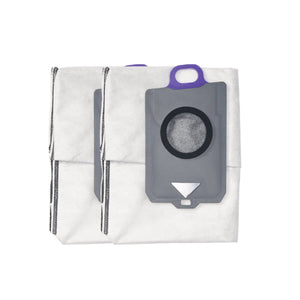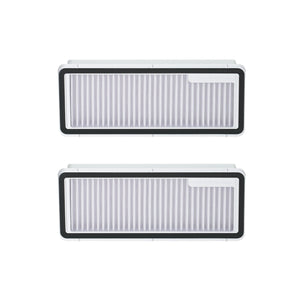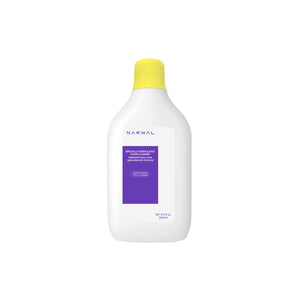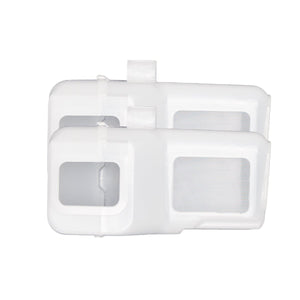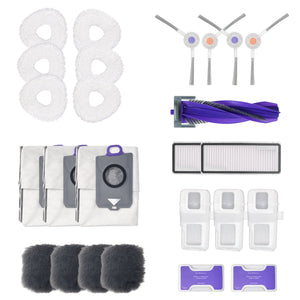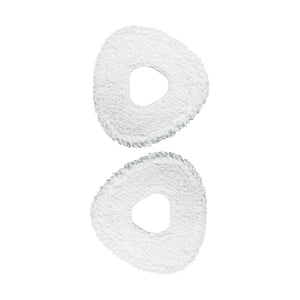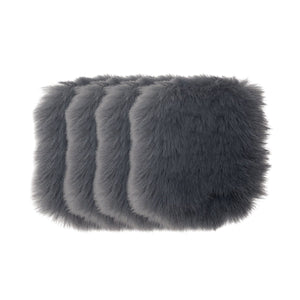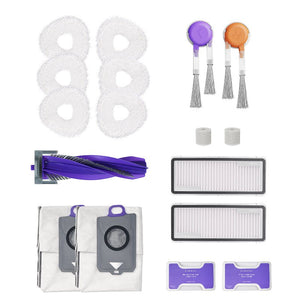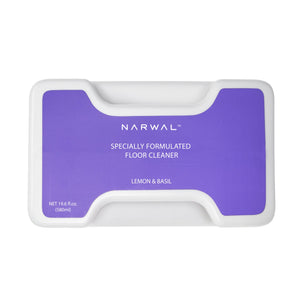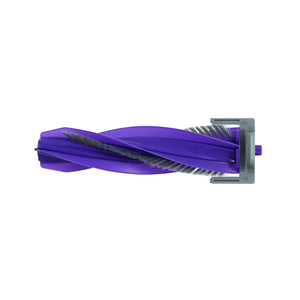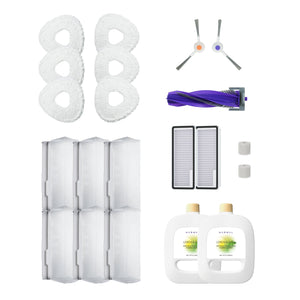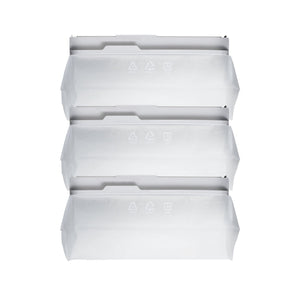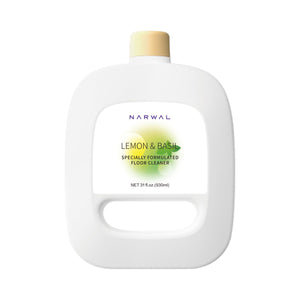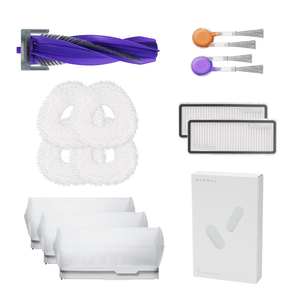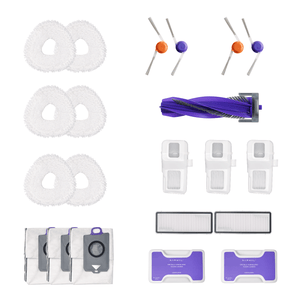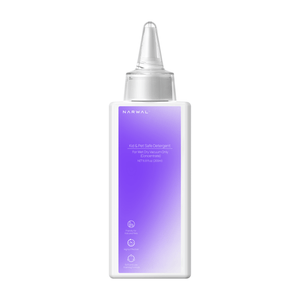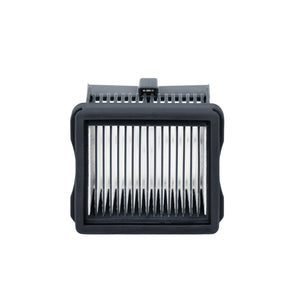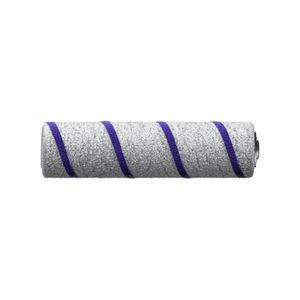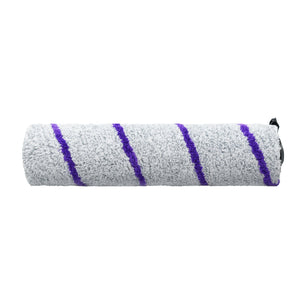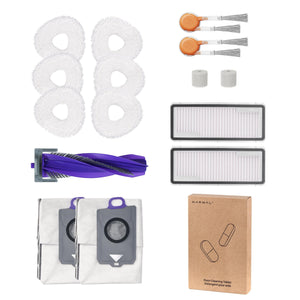A vacuum filter is one of the most important components of a robot vacuum. It traps dust, dirt, and allergens—keeping your indoor air clean and your vacuum running efficiently. Without a filter, debris would simply recirculate into the air instead of being captured. When the vacuum runs, air is pulled in with dust and debris. The filter traps the dirt, and clean air goes out the other side.
In this guide, you’ll learn what a robot vacuum filter is, why it matters, and the different types available—from HEPA to carbon to foam filters. We'll also compare their pros and cons, and help you choose the best one for your needs.
What Is a Robot Vacuum Filter?
A robot vacuum filter is a built-in component located inside or near the dustbin compartment of the vacuum. As the vacuum runs, it pulls in air mixed with dust, pet hair, and debris through its suction pathway. The filter sits between the dustbin and the air outlet, capturing these particles before the cleaned air is released back into your home.
Most robot vacuums use multi-layer filtration systems. For example, a HEPA filter targets fine dust and allergens, while a foam or mesh layer traps larger debris. This combination helps protect the motor, maintain strong suction, and improve indoor air quality.
Without a filter, the vacuum would simply circulate dirty air instead of removing it. That’s why the filter plays a vital role not only in floor cleaning but also in keeping your living space healthier.
Why Vacuum Filters Matter
Robot vacuum filters help your vacuum do more than just move dirt—they trap it. They keep dust, hair, and allergens from going back into the air, making your home cleaner and healthier.
Here’s why filters matter:
1. Cleaner Air
The filter traps tiny things like pet dander and pollen. This helps stop them from blowing back into the air while your vacuum runs. It's helpful for anyone with allergies.
2. Protects the Motor
The motor makes your vacuum run. If dust gets inside, it can damage it. The filter blocks dirt before it reaches the motor, helping your vacuum last longer.
3. Keeps Suction Strong
A clean filter keeps airflow steady. This helps the vacuum pick up dirt better. If the filter is missing or too dirty, suction gets weaker.
4. Better Cleaning in Less Time
When the filter works well, your vacuum cleans more in one pass. That saves battery life and makes cleaning faster.
If your vacuum didn’t have a filter, dirt would blow back into the room. Dust could clog the machine and shorten its life. That’s why using a filter isn’t just helpful—it’s part of what makes the vacuum work right. These advantages are what make vacuum filtration better than just sweeping or using gravity-based filters.
Types of Vacuum Filters
In this section, we'll take a look at the various types of filters used in robot vacuums. We'll cover HEPA filters, carbon filters, foam filters, and more, each designed to improve performance in different ways. We'll also touch on the comparison of vacuum filtration vs gravity filtration and the role each filter plays in making your robot vacuum work efficiently.

HEPA Filters
HEPA filters are ideal for trapping small particles like dust, pollen, and pet dander. They're ideal for homes with people who have allergies or pets. By capturing fine dust particles, they help improve air quality in your home.
Many robot vacuums use multi-stage filtration systems—for example, a HEPA filter for fine dust and a foam layer for larger debris. This setup improves air quality and protects the motor better than using just one filter type.
If you would like to know more about hepa vacuum cleaner, you can click here.
Carbon Filters
Carbon filters help remove odors such as pet smells or smoke. While they don’t catch fine particles as well as HEPA filters, they are excellent for keeping your home smelling fresh and clean. These filters are useful if you have strong odors in your home.
Foam Filters
Foam filters are made from soft, spongy material that traps larger debris. They're tough, can be used again, and are simple to clean. However, they are not as effective at capturing fine particles compared to HEPA filters. Foam filters are great for general cleaning and everyday use.
Cloth Filters
Cloth filters are affordable and reusable. They trap larger dust particles, but they are not as effective at filtering out fine dust or allergens. Cloth filters are often used in more budget-friendly robot vacuums for general cleaning tasks.
Pre-Motor Filters
Pre-motor filters are made to safeguard your robot vacuum's motor. They catch dirt and debris before they harm the motor, keeping the vacuum working at full strength.
Post-Motor Filters
After-motor filters catch dust that might get past the pre-motor filters. They make sure the air coming out of your robot vacuum is clean and particle-free, boosting air quality.
Bags
Some robot vacuums employ bags to gather dust and dirt. This setup is neat and sanitary, letting you toss out the debris without creating a mess. However, you’ll need to replace the bags regularly, which can add to the cost of ownership.
Vacuum Filtration vs Gravity Filtration
Vacuum filtration works better in robot vacuums than gravity filtration. In vacuum filtration, the suction helps pull dirt through the filter, ensuring a faster and more efficient cleaning process. Gravity filtration, though, depends on gravity, which may be slower and not as efficient, especially in small systems like robot vacuums.
Here's a quick comparison to help you choose the right filter based on your needs:
|
Filter Type |
Best For |
Strengths |
Limitations |
|
HEPA |
Allergies, fine dust |
Traps tiny particles, cleaner air |
May need replacement, not washable |
|
Carbon |
Smells from pets or smoke |
Removes odors |
Doesn’t catch fine dust well |
|
Foam |
General cleaning, big debris |
Washable, reusable |
Not great for fine particles |
|
Cloth |
Budget vacuums, large dust |
Simple, reusable |
Low filtration for tiny particles |
|
Pre-Motor |
Protecting vacuum motor |
Keeps motor clean |
Needs to be paired with other filters |
|
Post-Motor |
Air quality after cleaning |
Extra air cleaning |
Usually part of multi-layer system |
|
Dust Bags |
Cleaner disposal, less mess |
Hygienic, easy to remove |
Ongoing cost, not reusable |
How to Choose the Right Filter for Your Needs
Choosing the right filter depends on what’s in your home. Do you have pets? Allergies? Want to save money? Each filter works best in different situations. Here’s how to pick one that fits your needs.
If you have pets
Pets leave behind hair and tiny skin flakes. These can float in the air and settle on floors and furniture.
→ A HEPA filter helps trap small particles like pet dander.
→ A carbon filter helps reduce pet smells and keeps rooms fresher.
If someone has allergies
Allergies can be made worse by dust, pollen, or other fine particles in the air.
→ A HEPA filter is best because it catches these small bits and helps improve air quality.
→ If allergies are a concern, you may also want to ask your doctor for advice on home air care.
If you want to save money
Some filters cost more and need to be changed often.
→ Foam or cloth filters are washable and reusable. They’re great for small homes or everyday messes, but may not trap fine dust.
If you prefer easy cleanup
Emptying a dustbin can be messy. Some people want a simpler way.
→ Dust bags are easy to remove and throw away, with less mess. Just remember to keep extra bags ready.
Vacuum Filtration vs Gravity Filtration
Vacuum filtration means using suction to pull air through a filter and trap dust inside the machine. Robot vacuums use vacuum filtration, not gravity filtration—and for good reason.
In vacuum filtration, the machine pulls air and dust through the filter using strong suction. This makes the cleaning fast and effective, especially in small, moving machines like robot vacuums.
Gravity filtration, on the other hand, relies only on gravity to move things through a filter. It’s slower and works best in large, still setups like lab equipment or water filters—not in small home devices.
That’s why robot vacuums use suction-based vacuum filtration. It helps them clean more dirt in less time.

Can a robot vacuum work without a filter?
No, a robot vacuum won't work well without a filter. The filter catches dirt, dust, and allergens, stopping them from going back into the air while it runs.
How can I tell when to swap my robot vacuum's filter?
If you see suction weaken, dust blow out, or filter damage, replace it. If cleaning doesn't help, swap the filter.
What is the difference between HEPA and carbon filters?
HEPA filters trap tiny dust, pollen, and pet dander. Carbon filters help remove bad smells, like pet odors or smoke. If you want cleaner air, choose HEPA. If smell is the main issue, carbon works better. Some vacuums use both.
What type of filter is best for pet hair?
A HEPA filter is best for homes with pets. It catches tiny bits of pet hair and dander that other filters may miss. If you also notice pet smells, using a carbon filter can help reduce them.
Conclusion
A robot vacuum filter plays a key role in how well your vacuum works. It helps keep suction strong, protects the motor, and makes the air in your home cleaner. No matter which type you use—HEPA, carbon, foam, or cloth—taking care of the filter helps your vacuum last longer and clean better.
If you’re not sure how to clean or replace your vacuum filter, check out our simple robot vacuum filter maintenance guide for step-by-step tips.





















